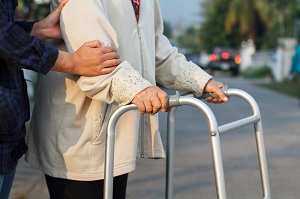
Elderly citizens made up approximately 25 percent of all New York State pedestrian traffic fatalities in 2012, according to the National Highway Traffic Safety Administration. The natural aging process in addition to the fast-paced city traffic play a large part in keeping elderly pedestrians at greater risk in accidents.
The aging process makes elderly pedestrians more susceptible to being involved in a traffic accident than younger pedestrians. There are several reasons for this phenomena.
Elders typically walk slower and have slower reflexes to react to oncoming vehicles. In addition, the use of assistive-devices such as a cane, walker, or wheelchair can make quick movements almost impossible.
As the body ages, certain faculties diminish. As we age, our eyesight worsens, as does our hearing, and this makes it harder for elders to hear or see oncoming traffic. Poor eyesight can also impair an elderly walker from seeing pedestrian signals and crosswalks.
The aging process can also result in cognitive decline. The danger is especially high for elderly pedestrians suffering from dementia or Alzheimer’s disease. These conditions can cause confusion, memory loss, and other cognitive disruptions that can delay crossing the street or cause the elder to walk into dangerous areas.
Finally, many drivers can become impatient waiting for elders to cross and attempt to speed around them. Maneuvers like this can startle the pedestrian and cause them to fall into oncoming traffic. Falls are also more likely in the winter months when roads and sidewalks become iced-over.
According to the National Highway Traffic Safety Administration (NHTSA), in 2014, there were 4,884 fatalities nationwide; pedestrians over the age of 65 accounted for 979 of those deaths. Both drivers and family members of elderly pedestrians can help reduce the rate of elderly pedestrian fatalities.
What Drivers Can Do
What Pedestrians and Family Members Can Do
As technology advances and we start to see more driverless cars on the road, pedestrian fatalities will hopefully decline. However, in the meantime, it is up to every driver and pedestrian to do their part to stay safe when using our city streets and highways.